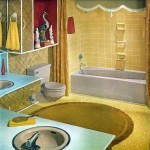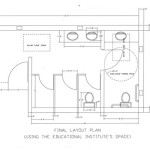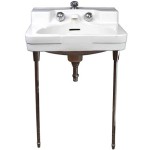How Much Does It Cost to Renovate a Bathroom?
Bathroom renovations are a common home improvement project, often undertaken to modernize the space, improve functionality, and increase property value. However, understanding the financial implications of such a project is crucial for effective planning and budgeting. The cost of a bathroom renovation can vary significantly, depending on a multitude of factors including the scope of the project, the materials selected, and the labor involved.
Accurately estimating the expense requires considering all project components, from demolition and plumbing to tiling and fixture installation. This article will delve into the various elements that contribute to the overall price, offering a comprehensive guide to understanding the potential costs associated with bathroom renovations. It will provide detailed insights into different project scopes, material options, and labor considerations, empowering homeowners to make informed decisions and plan their renovations effectively.
Factors Influencing Bathroom Renovation Costs
Several key determinants influence the final cost of a bathroom renovation. These include the project scope – whether it is a cosmetic upgrade or a complete overhaul – the quality and type of materials chosen, and the labor rates in the specific geographical area. Furthermore, unexpected issues discovered during demolition, such as water damage or outdated plumbing, can significantly impact the budget.
The size of the bathroom is also a significant cost factor. Larger bathrooms typically require more materials, more labor hours, and potentially more complex plumbing and electrical work. The complexity of the design, including intricate tile patterns or custom cabinetry, will similarly drive up the expense.
Scope of the Renovation
The scope of the renovation is perhaps the most significant factor affecting the overall cost. A minor or cosmetic renovation, focusing on surface-level changes, will be far less expensive than a complete gut renovation that involves relocating plumbing, electrical wiring, and tearing down walls. A minor renovation might involve replacing the vanity, toilet, and faucet, repainting the walls, and installing new lighting fixtures, all while maintaining the existing layout. Such a project might fall in the lower end of the cost spectrum.
On the other hand, a complete gut renovation requires removing all existing fixtures, tiles, and sometimes even walls. This type of project allows for a complete redesign of the bathroom layout, including moving the toilet, shower, or bathtub. It often entails updating plumbing and electrical systems to comply with current building codes. Consequently, a complete renovation is substantially more expensive than a cosmetic upgrade.
A mid-range renovation falls somewhere between these two extremes. This could involve replacing the bathtub with a shower, updating the tiling, and installing new cabinetry, while keeping the existing plumbing layout largely unchanged. The cost of a mid-range renovation will depend on the specific changes made and the materials selected.
Materials Selection
The materials chosen for the bathroom renovation significantly impact the final cost. The price of tiles, for instance, can vary dramatically depending on the material, design, and brand. Basic ceramic or porcelain tiles are generally the most affordable options, while natural stone tiles, such as marble or granite, can be significantly more expensive. Similarly, the cost of bathroom fixtures, such as toilets, sinks, faucets, and showerheads, can range from budget-friendly to high-end designer options.
The selection of vanities and cabinetry also plays a crucial role. Stock vanities are typically less expensive than custom-built cabinets. The material used for the countertop, such as laminate, quartz, or granite, will also impact the total cost. Additionally, the choice of lighting fixtures and mirrors contributes to the expense. Energy-efficient LED lighting and high-quality mirrors can add to the budget.
Furthermore, the choice of plumbing fixtures can have a substantial impact. Low-flow toilets and showerheads can be more expensive upfront but may result in long-term water savings. Consider the materials used for piping as well, as different types of piping (e.g., PEX, copper) have different costs and installation requirements.
Labor Costs
Labor costs represent a significant portion of the overall bathroom renovation budget. These costs encompass the services of various professionals, including plumbers, electricians, tile installers, carpenters, and general contractors. Rates can vary widely depending on the geographic location, the experience of the professional, and the complexity of the project.
Plumbers are essential for installing or relocating plumbing fixtures, such as toilets, sinks, and showers. Electricians ensure that the electrical wiring is up to code and can install new lighting fixtures and outlets. Tile installers are responsible for installing tiles on the floors, walls, and shower surrounds. Carpenters can build custom cabinetry or install prefabricated vanities.
A general contractor can oversee the entire renovation project, coordinating the various trades and ensuring that the project is completed on time and within budget. While hiring a general contractor adds to the overall cost, it can also save time and reduce stress by streamlining the renovation process. However, it is crucial to obtain multiple quotes from different contractors and to carefully review their qualifications and references before making a decision.
Breaking Down the Costs: Typical Expense Categories
To gain a better understanding of the costs involved, it's helpful to examine the typical expense categories associated with bathroom renovations. These categories include demolition, plumbing, electrical, carpentry, tiling, fixtures, lighting, and painting. Each category represents a significant portion of the overall budget, and careful planning and budgeting are essential for each.
Allocating a percentage breakdown to these various project components can help in developing a comprehensive budget plan. While the exact percentages can vary depending on the specifics of the project, a general guideline can provide a reasonable starting point for budgeting purposes.
Demolition and Disposal
The demolition phase involves removing existing fixtures, tiles, and sometimes walls. This process can be labor-intensive and may require the use of specialized tools. The cost of demolition depends on the size of the bathroom and the extent of the demolition required. Additionally, the cost of disposing of the debris must be considered. Many contractors include demolition and disposal in their overall project estimate.
Some homeowners opt to handle the demolition themselves to save money. However, this can be a time-consuming and physically demanding task. It's important to wear appropriate safety gear and to properly dispose of the debris in accordance with local regulations. Additionally, care must be taken to avoid damaging any underlying plumbing or electrical wiring.
Unexpected issues, such as mold or asbestos, discovered during demolition can significantly increase the cost. If mold is present, it must be professionally remediated before any further work can be done. Asbestos, if present, must be handled by a certified asbestos abatement contractor.
Plumbing and Electrical Work
Plumbing and electrical work are critical components of a bathroom renovation, and they often require the services of licensed professionals. Plumbers are responsible for installing or relocating plumbing fixtures, such as toilets, sinks, and showers. They also ensure that the water supply and drainage systems are functioning properly. The cost of plumbing work depends on the complexity of the installation and the number of fixtures being installed or relocated.
Electrical work involves ensuring that the electrical wiring is up to code and can handle the increased electrical load of new lighting fixtures and outlets. Electricians can install new wiring, outlets, and lighting fixtures, and they can also upgrade the electrical panel if necessary. The cost of electrical work depends on the complexity of the installation and the number of new circuits required.
It is crucial to hire licensed and insured plumbers and electricians to ensure that the work is done safely and properly. Failing to comply with building codes can result in fines and delays. Additionally, improper plumbing or electrical work can pose a safety hazard.
Tiling and Flooring
Tiling and flooring are essential for both the aesthetics and functionality of a bathroom. The cost of tiling depends on the type of tile chosen, the size of the bathroom, and the complexity of the installation. Basic ceramic or porcelain tiles are generally the most affordable options, while natural stone tiles, such as marble or granite, can be significantly more expensive.
The labor cost for tiling can also vary depending on the complexity of the installation. Intricate tile patterns or custom designs require more time and skill to install, which can increase the labor cost. It is important to hire an experienced tile installer to ensure that the tiles are installed properly and that the grout lines are even and consistent.
The choice of flooring also impacts the overall cost. Popular flooring options for bathrooms include tile, vinyl, and engineered wood. Tile is a durable and water-resistant option, while vinyl is a more affordable and softer alternative. Engineered wood can provide a warm and natural look, but it is important to choose a water-resistant variety.
Tips for Saving Money on a Bathroom Renovation
While bathroom renovations can be expensive, there are several strategies homeowners can employ to reduce costs without sacrificing quality. These strategies include careful planning, DIY efforts where appropriate, sourcing materials strategically, and being flexible with the design.
Thorough research, obtaining multiple quotes from contractors, and comparing material prices can significantly impact the overall budget. Compromises on certain aspects of the design or finishes may be necessary to stay within budget, but careful prioritization can ensure that the most important features are addressed without overspending.
Planning and Budgeting
Careful planning and budgeting are essential for controlling costs during a bathroom renovation. Start by creating a detailed plan that outlines the scope of the project, the materials to be used, and the timeline for completion. Obtain multiple quotes from different contractors and compare their prices and services.
Create a realistic budget that includes a contingency fund for unexpected expenses. It is common for unforeseen issues to arise during a renovation, such as water damage or outdated plumbing. A contingency fund can help cover these unexpected costs without derailing the project.
Prioritize the most important features of the renovation and be willing to compromise on less essential aspects. For example, you may be able to save money by choosing a less expensive tile or vanity.
DIY Projects
Consider taking on some of the less complex tasks yourself to save on labor costs. This could include demolition, painting, or installing simple fixtures. However, it is important to be realistic about your skills and abilities and to avoid attempting tasks that are beyond your expertise.
Improper DIY work can result in costly mistakes and potentially dangerous situations. Plumbing and electrical work should generally be left to licensed professionals. However, tasks such as painting and demolition can be done by homeowners with some basic skills and tools.
Before starting any DIY project, research the proper techniques and safety precautions. Wear appropriate safety gear, such as gloves and eye protection, and follow all manufacturer instructions.
Material Sourcing
Shop around for the best prices on materials. Compare prices at different retailers, both online and in-store. Consider purchasing materials during sales or clearance events. It is also often possible to find discounts on bulk purchases.
Consider using salvaged or reclaimed materials to save money and add character to your bathroom. Salvaged fixtures, such as vanities and lighting fixtures, can often be found at antique stores or salvage yards. Reclaimed wood can be used for flooring or accent walls.
Be wary of extremely low prices, as they may indicate poor quality materials. It is important to choose materials that are durable and will withstand the moisture and humidity of a bathroom environment.

Bathroom Renovation Cost How Much To Budget For A Remodel

Bathroom Renovation Cost How Much To Budget For A Remodel

How Much Does A Bathroom Remodel Cost 2024 Data Angi

Bathroom Renovation Cost How Much To Budget For A Remodel

Bathroom Remodeling Costs In Chicago 2024

Bathroom Remodeling Costs In New Jersey 2024 Sweeten Com

Bathroom Renovation Cost How Much To Budget For A Remodel

Understanding Small Bathroom Remodel Costs And How To Save

Bathroom Remodeling Costs In New Jersey 2024 Sweeten Com

Bathroom Remodel Costs 5 Things No One Will Tell You







